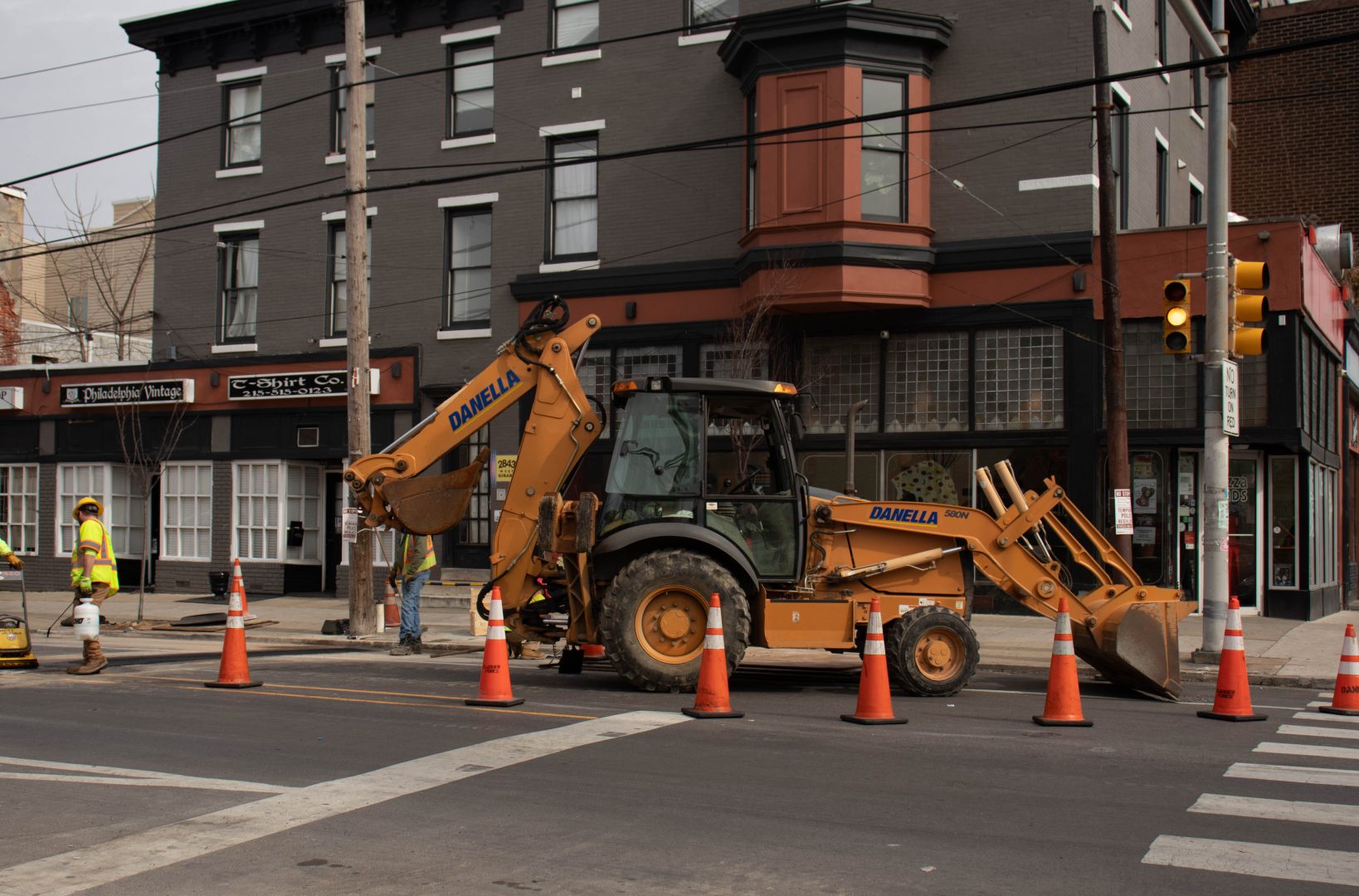
On Jan. 26, SEPTA removed the Route 15 trolleys, which run the length of Girard Avenue. In their place, buses have been added, following the same schedule. The change has elicited reactions from residents, not just about the trolleys, but about transportation in the neighborhood in general.
In a neighborhood that has complained about lack of transportation in the past, change can be a big deal. Generally, people are happier with the buses.
“It gets you where you got to go,” said Raheem Scott, who has lived in the neighborhood for the past 32 years. Scott works at Young’s Sneaker City and relies on public transportation to get to work.
Jose Reyes, a cook at Italian Express on West Girard Avenue, takes the Broad Street Line and then Route 15 every day to work from his home in South Philadelphia. He was critical of the trolleys and said that he preferred the buses.
“A lot of times, when something happens on the street, they[‘re] not running on time and that affects the people on the trolley,” Reyes said.
Getting from the Girard Avenue subway stop to the heart of the retail district in Brewerytown requires a roughly 15-minute ride on the Route 15 bus. At least the buses, Reyes said, are more consistent and reliable than the trolleys.
“I prefer the bus,” Scott said. “It’s faster. The trolley gets stuck a lot. You can’t go around, [if] there’s an accident, we’re just sitting there forever.”
SEPTA’s chief press officer, Andrew Busch, said that the Route 15 trolleys were being removed due to road construction along Girard Avenue, and as part of a systemwide overhaul of all trolleys.

“They were refurbished when they were put back into service in the early 2000s,” he said. “We do need to, you know, to get into them and do a good amount of work to make sure that they’re good to go for about another 10 years.”
SEPTA hopes to move toward a full trolley modernization program over the next decade, Busch said. Along Route 15, trolleys are expected to remain out of service for the next 12 to 18 months, returning in 2021. According to Philadelphia2035’s Lower North Philadelphia District Plan, almost 15,000 people take Route 15 daily.

For North Philadelphia resident Karen Coleman, the switch to buses has made her commute more convenient.
“They added the 15 on the bus to be quicker, and it is quicker,” she said. “I can get here in 20 minutes, where before it took me 40 minutes.”
Though her commute to her job in Brewerytown as a day care worker has been shortened, Coleman expressed concern about the recent fare increases for those that use public transportation. Coleman’s commute, which includes multiple transfers — six rides a day — can run her upward of $15 when she uses cash instead of SEPTA Key.
With the implementation of Key cards, SEPTA changed how transfers work. If someone has to use cash, the ride would cost $2.50. With the use of the card, bus fare costs $2, but there is a $5 minimum to add money to a card.
If a rider needs to use cash and has to transfer buses, they would need to pay the full fare every time. With a Key card, transfers are $1.
Though her ride is shorter, Coleman said she still isn’t happy with what it costs.
“They should think about the people who are riding it,” Coleman said. “They should give us a free day because we’re the ones that are making this line go. We’re out and about, do something for Philly.”

Jonathan Vidal, resident of Brewerytown and employee at Kush Society, said that though he is able to walk to work, he sees the effects of transportation in the community. He said that the local community has complained about transportation often, specifically the constant delays on their route to work and home, even with the trolleys being replaced by buses.
“Around here we see an average of three buses every ten minutes, but we see people miss it all the time,” Vidal said, pointing to the stop right outside the shop at 29th Street and Girard Avenue. “We see people waiting at this stop right here.”
Because many may perceive SEPTA as unreliable, Vidal said he has noticed more locals using bikes to get to their destinations.

Aside from buses, Vidal suggested that Brewerytown needs more transportation investments like bike lanes. According to the US Census Bureau’s 2018 American Community Survey, about 2.6% of Philadelphians commute to work with bikes, more than any other large city in the U.S.
“More people are biking everywhere, not just Fishtown or here,” Vidal said. “They need to make more bike lanes like we see in Center City. They have lanes, but not around here.”
For Scott, transportation headaches just seem to come with the growth and construction happening in the neighborhood, especially along Girard Avenue.
“There’s always something going on with the track, always doing some kind of construction work,” he said. “That’s because in this area, there’s a lot of new houses and all that type of stuff, so it was a lot of chaos.”
Please email any questions or concerns about this story to: [email protected].


Be the first to comment